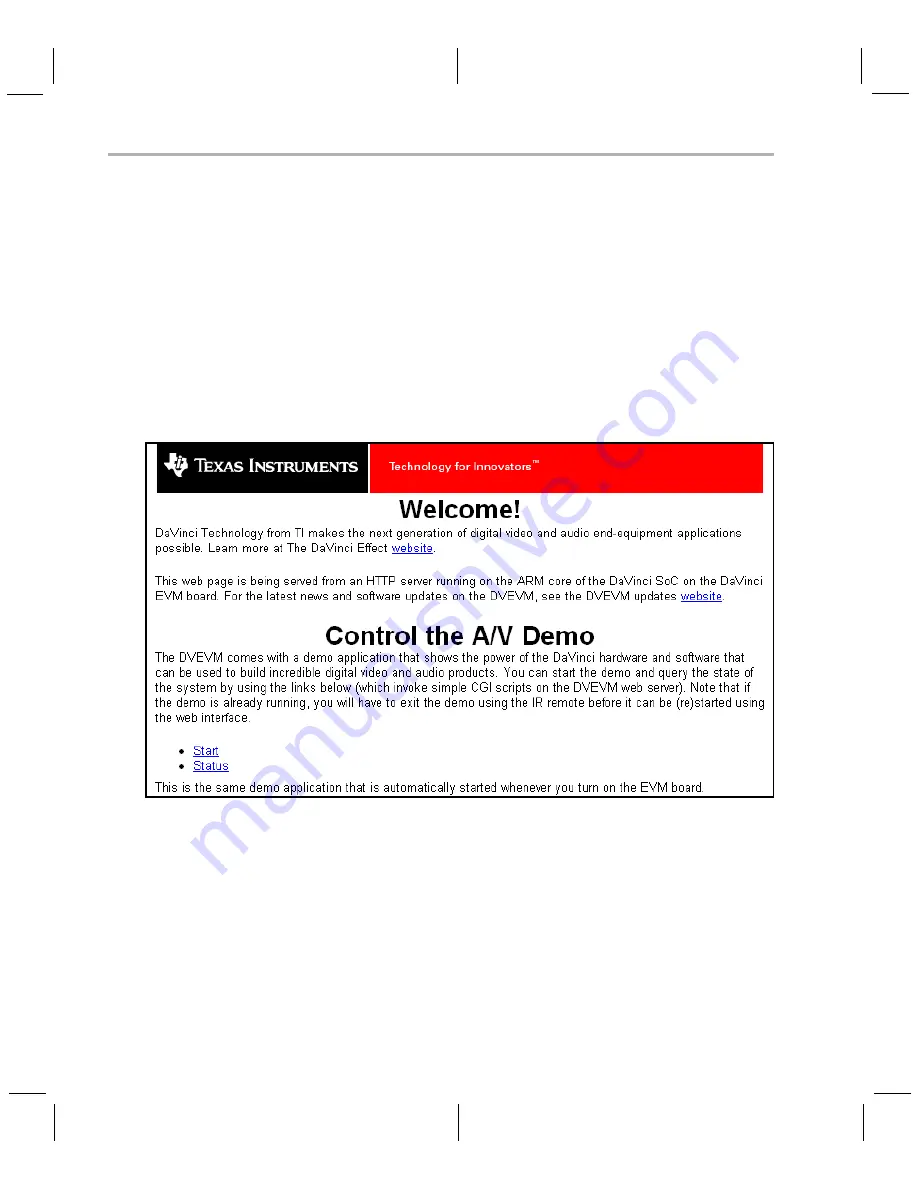
Running the Network Demo
3-12
3.5
Running the Network Demo
As an example of standard TCP/IP networking support, the DVEVM
examples include a small HTTP web server. This web server is started on
the GPP-side as part of the Linux startup sequence. It configured to
service requests from web browsers on the standard TCP/IP port 80.
See Step 4 of Section 2.1 for the hardware setup required for networking.
After the EVM board has booted, connect a PC to the same network to
which the EVM board is connected. Enter a URL of the form "http://ip-
address-of-evm" in a web browser (for example, Internet Explorer,
Firefox, or Opera). The IP address of the board is shown in the lower-right
corner of the main menu of the A/V demos.
You should see a web page similar to the following with information about
DaVinci technology and the DVEVM software.
Use this web page to interact with the board and run the A/V demos
described in Section 3.3,
. Two simple
CGI scripts on the EVM enable you to start the demos (assuming they are
not already running) and see what processes are running on the board.
If you want to see the demo started from the web page, be sure to exit
the demo first (use the Power button from the main menu).
The web server software is an open-source package called THTTPD
(http://www.acme.com/software/thttpd/). It is designed to be small, fast,
and portable. The source code is included with the DVEVM software. You
can get the latest version directly from the web. The web server and CGI
scripts are installed on the target in the /opt/dvsdk/dm6467/web directory.
Summary of Contents for TMS320DM6467 DVEVM
Page 1: ...TMS320DM6467 DVEVM v2 0 Getting Started Guide Literature Number SPRUF88E April 2009...
Page 20: ...2 8...
Page 56: ...4 24...
Page 70: ...Index 4...
Page 71: ......






























